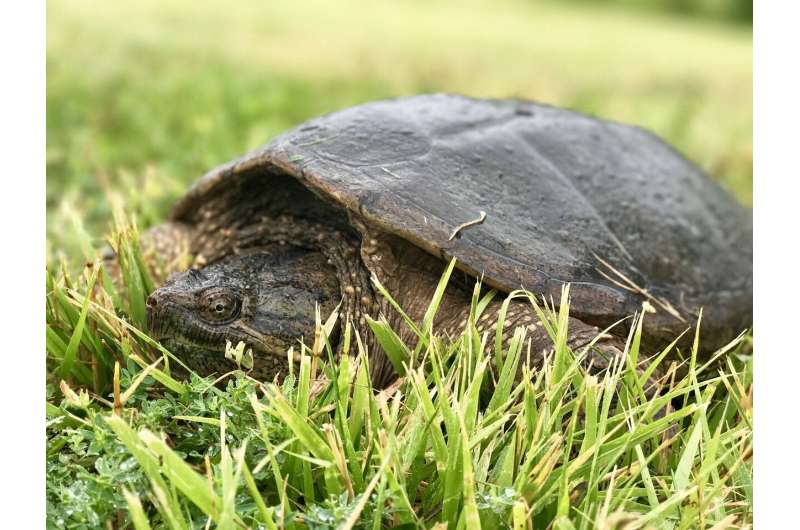Turtle study shows hearts can be programmed to survive without oxygen

University of Manchester and University of North Texas scientists are the first to show that an embryonic living heart can be programmed to survive the effects of a low oxygen environment in later life.
The BBSRC funded study of juvenile Common Snapping Turtles for the first time explains the heart's biological mechanisms which help turtles to uniquely survive up to six months without oxygen.
And according to the team, it's the exposure to low levels of oxygen during embryonic development which programmes the animals' hearts to be more resilient to what is known as hypoxia for the rest of their lives.
The study led by Dr. Ilan Ruhr and Dr. Gina Galli from The University of Manchester could one day be translated into treatments which alleviate damage to the heart caused by hypoxia. It is published in the journal Proceedings of the Royal Society B.
Hypoxia occurs during a heart attack and can also damage a heart during transplant surgery.
According to the team, exposure to hypoxia during development causes epigenetic changes to the genome that can turn genes on or off, which are key to the remarkable ability of the turtle heart cells to tolerate zero oxygen.
"Turtles are incredible creatures that can uniquely survive for long periods of time under ice or at depths where there is little oxygen," said Ilan Ruhr, who is a postdoctoral researcher at The University of Manchester.
"We're excited to be the first to show that it is possible to change the degree of tolerance that turtles have for low oxygen environments by early exposure to hypoxia during development"
"Now we hope to isolate those epigenetic signatures which help turtles to survive for so long without oxygen with a hope to developing epigenetic drugs that can switch on tolerance to low oxygen environments in human hearts."
The team are studying heart, rather than other organs in the body, as it is one of the organs most at risk of damage from hypoxia.
They isolated heart muscle cells from juvenile turtles which lived as embryos in either normal levels of oxygen at 21 percent O2—or half the levels of oxygen, 10 percent.
The procedure mimicked what happens in nature: eggs at the bottom of turtles' nests are more exposed to hypoxia.
And they subjected the juvenile turtles to lower levels of oxygen while measuring intracellular calcium (which binds to the contractile proteins of the heart, known as the myofilaments), pH, and reactive oxygen species—a molecule we all have which can become toxic when tissue reoxygenates too quickly.
Dr. Gina Galli from The University of Manchester said: "Heart cells in turtles and humans are anatomically quite similar, so if we can learn to understand what factors allow them to survive in an oxygen free environment, we'd hope to be able to apply that to a medical scenario.
"Our study showed that early exposure to hypoxia in these animals both reduces the amount of reactive oxygen species that could protect their myofilaments from damage and allows them to contract normally in the complete absence of O2.
"A drug which is able to switch on mechanisms to protect the human heart from oxygen deprivation would be of enormous benefit
"It could, for example protect individuals at risk of heart attack or protect organs for transplantation."
The paper, "Developmental plasticity of cardiac anoxia-tolerance in juvenile common snapping turtles (Chelydra serpentina)," is published in Proceedings of the Royal Society B.
More information: Ilan M. Ruhr et al. Developmental plasticity of cardiac anoxia-tolerance in juvenile common snapping turtles (Chelydra serpentina), Proceedings of the Royal Society B: Biological Sciences (2019). DOI: 10.1098/rspb.2019.1072
Journal information: Proceedings of the Royal Society B
Provided by University of Manchester



















